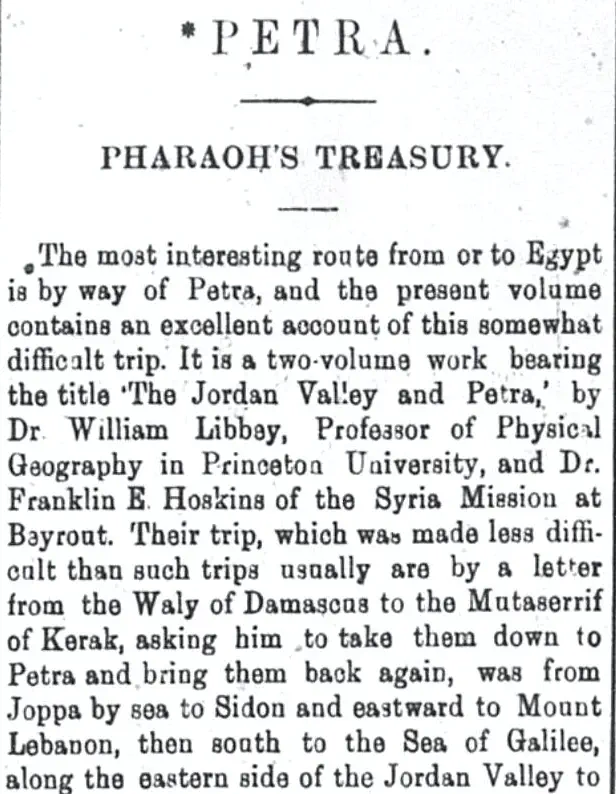Petra
 January 9, 1906
January 9, 1906On page four of the January 9th, 1906 edition of The Egyptian Gazette I found an article title: Petra. The article is basically a summary of two authors, Dr. William Libbey and Dr. Franklin E. Hoskins, and their account of traveling through the area. In the article they labeled Petra “a city old as time itself” and made it clear that tourists were rarely welcomed until these two authors spent a surprising five days in the city without molestation.
They described Petra as a rose red city that was in possession of some worthwhile monuments. Upon further research, I found images of the city that proved these claims to be true. I also found that the direct translation of Petra, from Greek to English, is ‘Rock’. It is a city that is surrounded by red stone, common to the geography of Jordan, and what makes the monuments worthwhile is that they carved into the red stone that comprises the area. These iconic monuments can be seen in Steven Spielberg’s “Indiana Jones and the Last Crusade.”
However, my interest is not in the aesthetic of Petra, but rather the financial prosperity it offered in terms of its geography. According to the national Petra foundation, Petra was ideally placed on what is known today as the The King’s Highway in Jordan. This is significant because the Highway lies on a natural fault line, which made the city easily found by traders. I would like to inquire what economic benefit Petra offered Egypt and its people in 1906.
##sources
Outside Links: http://www.robertfulford.com/petra.html http://www.smithsonianmag.com/lifelists/guarding-petra-11031077/
Blog Post Links: https://dig-eg-gaz.github.io/curiosities/doublemurder/ https://dig-eg-gaz.github.io/curiosities/Egyptology/